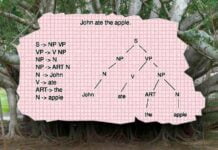A morpheme is the smallest meaningful constituent of a linguistic expression. The field of linguistic study dedicated to morphemes is called morphology.
A morpheme is a short segment of language that meets three basic criteria:
- It is a word or a part of a word that has meaning.
- It cannot be divided into smaller meaningful segments without changing its meaning or leaving a meaningless remainder.
- It has relatively the same stable meaning in different verbal environments.
In English, morphemes are often but not necessarily words. Morphemes are comprised of two separate classes called (a) bases (or roots) and (b) affixes.

Morphemes that stand alone are considered roots (such as the morpheme cat). This is a morpheme in a word that gives the word its principal meaning. Other morphemes, called affixes, are found only in combination with other morphemes. For example, the -s in cats indicate the concept of plurality but are always bound to another concept to indicate a specific kind of plurality.
Free and Bound Morphemes
There are two types of morphemes-free morphemes and bound morphemes.
Free morphemes can function independently as words (E.g., town, dog) and appear within lexemes (E.g., town hall, doghouse). They can stand alone with a specific meaning (E.g., eat, date, weak).
Bound morphemes appear only as parts of words, always in conjunction with a root and sometimes with other bound morphemes. They cannot stand alone with meaning. For example, un– appears only when accompanied by other morphemes to form a word. Most bound morphemes in English are affixes, specifically prefixes and suffixes. Examples of suffixes are -tion, -sion, -tive, -ation, -ible, and -ing. Bound morphemes that are not affixed are called cranberry morphemes.
Affixes
An affix is a bound morpheme that occurs before or after a base. An affix that comes before a base is called a prefix. Some examples of prefixes are ante-, pre-, un–, and dis–, as in the following words:
antedate
prehistoric
unhealthy
disregard
An affix that comes after a base is called a suffix. Some examples of suffixes are -ly, -er, -ism, and -ness, as in the following words:
happily
gardener
capitalism
kindness
Derivational Affixes
An affix can be either derivational or inflectional. Derivational affixes serve to alter the meaning of a word by building on a base. In the examples of words with prefixes and suffixes above, the addition of the prefix un- to healthy alters the meaning of healthy. The resulting word means ‘not healthy’. The addition of the suffix -er to garden changes the meaning of garden, which is a place where plants, flowers, etc., grow, to a word that refers to ‘a person who tends a garden’. It should be noted that all prefixes in English are derivational. However, suffixes may be either derivational or inflectional.
Inflectional Affixes
There are a large number of derivational affixes in English. In contrast, there are only eight inflectional affixes in English, and these are all suffixes. English has the following inflectional suffixes, which serve a variety of grammatical functions when added to specific types of words. These grammatical functions are shown to the right of each suffix.
-s noun plural
-‘s noun possessive
-s verb present tense third person singular
-ing verb present participle/gerund
-ed verb simple past tense
-en verb past perfect participle
-er adjective comparative
-est adjective superlative
Zero-morpheme
A zero-morpheme is a type of morpheme that carries semantic meaning but is not represented by an auditory phoneme. A word with a zero-morpheme is analyzed as having the morpheme for grammatical purposes, but the morpheme is not realized in speech. They are often represented by /∅/ within glosses.
Generally, such morphemes have no visible changes. For instance, sheep is both the singular and the plural form of that noun; rather than taking the usual plural suffix -s to form hypothetical sheeps, the plural is analyzed as being composed of sheep + –∅, the null plural suffix. The intended meaning is thus derived from the co-occurrence determiner (in this case, ‘some-‘ or ‘a-‘).
In some cases, a zero-morpheme may also be used to contrast with other inflected forms of a word that contain an audible morpheme. For example, the plural noun cats in English consists of the root cat and the plural suffix -s, and so the singular cat may be analyzed as the root inflected with the null singular suffix -∅.




























